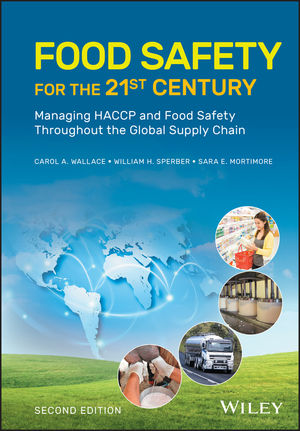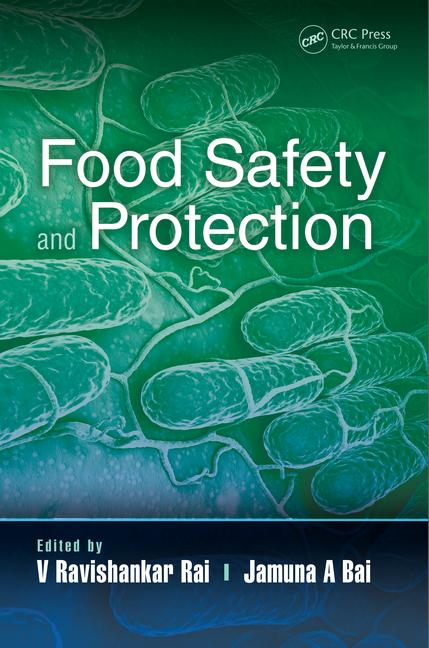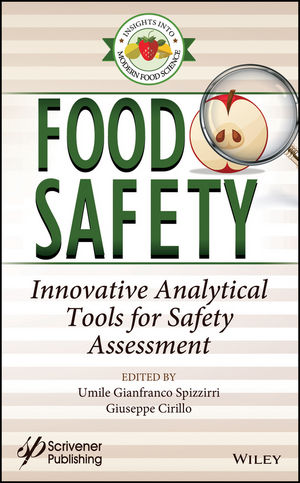Supply Chain and Food Safety Culture

The food supply chain is of global importance, not only to all of us as consumers but also for all of us fortunate to hold a job in the industry. Globally, 22 million people are employed in the food industry,[1] with Brazil, India, Japan, Russia and the U.S. accounting for 42 percent of worldwide employment. In the EU, 12 percent employment is directly generated across the food supply chain.[2]
The Global Food Safety Initiative (GFSI)[3] focuses on providing thought leadership and guidance on food safety management systems necessary along the food supply chain. It is recognized by this industry-driven initiative that food safety risks transcend the individual country, sector and company. GFSI’s thought leadership has extended outside the benchmarking requirements for making safe food to also include aspects of organizational and social sciences, as evidenced by its focus on auditor competencies and food safety culture.
In this introductory article, we will look at the importance of creating a culture of food safety; in five follow-up articles, we will summarize the perspectives of industry leaders and practitioners specific to their sector in the global food supply chain. We hope to provide a practical and integrated view of the strengthening of food safety culture through the eyes of these experts to elucidate the roles that you and your organization play in the global food supply chain.
Cultural Assumptions
Culture is number 1 on many CEOs’ priority lists for success in 2017.[4] For this reason, our ongoing focus on building food safety into the organizational culture of a food business is as relevant as ever. The food safety culture conversation sometimes assumes that culture (e.g., organizational, personnel safety, food safety, sustainability, etc.) is homogeneous and therefore more or less effective, independent of the composition and structure of the organization. Edgar Schein[5] helps us understand that this can be a false assumption, that organizations are made of subgroups and that cultures have subcultures. This is important for the food safety culture conversation, as we, those who make up these subcultures, can make very different assumptions related to the perceived value of food safety, magnitude of food safety risks, importance of the food safety learning programs, etc. Culture is made of assumptions that are deemed valid, taught to new members of a group or team, and used to guide behavior.[6] These assumptions can vary across nations, companies, functions and informal groups, as well as across the sectors of the food supply chain.
Trusting, Not Malicious
 Assumptions are made daily for appropriate food safety actions. When all is running smoothly, these actions become routine; when irregularities occur, we rely on the knowledge and experience of individuals to make the right food safety decisions. As such, it is the author’s view that most of us come to work to do a good job: delivering against the assumptions and taking direction from others who are making decisions about food safety. In other words, we trust the culture within the companies in which we work and do not maliciously try to make consumers sick from the food produced. For example, the owners of Jensen Farms did not intentionally purchase and put an unfit piece of equipment in place; Maple Leaf Foods did not intentionally distribute Listeria-contaminated sliced meat. Some will argue that Cadbury knew of its Salmonella-contaminated chocolate and that XL Foods knew of its high Escherichia coli counts. These arguments would not be incorrect, and when examining the details of each of these cases after the fact, we see how incorrect actions were taken based on assumptions thought to be valid: assumptions such as good-enough cleaning practices, good-enough communication practices and business decisions trumping food safety facts. When the industry and academicians focus on the importance of culture, it is precisely to better understand such assumptions and how to change them, and the way we do things around here, before an accident happens. To illustrate this idea and the impact of food safety assumptions, we look at a simplified model of the food supply chain. This model shows the interconnectedness of each of the five sectors with a few of the subsectors mentioned (Figure 1).
Assumptions are made daily for appropriate food safety actions. When all is running smoothly, these actions become routine; when irregularities occur, we rely on the knowledge and experience of individuals to make the right food safety decisions. As such, it is the author’s view that most of us come to work to do a good job: delivering against the assumptions and taking direction from others who are making decisions about food safety. In other words, we trust the culture within the companies in which we work and do not maliciously try to make consumers sick from the food produced. For example, the owners of Jensen Farms did not intentionally purchase and put an unfit piece of equipment in place; Maple Leaf Foods did not intentionally distribute Listeria-contaminated sliced meat. Some will argue that Cadbury knew of its Salmonella-contaminated chocolate and that XL Foods knew of its high Escherichia coli counts. These arguments would not be incorrect, and when examining the details of each of these cases after the fact, we see how incorrect actions were taken based on assumptions thought to be valid: assumptions such as good-enough cleaning practices, good-enough communication practices and business decisions trumping food safety facts. When the industry and academicians focus on the importance of culture, it is precisely to better understand such assumptions and how to change them, and the way we do things around here, before an accident happens. To illustrate this idea and the impact of food safety assumptions, we look at a simplified model of the food supply chain. This model shows the interconnectedness of each of the five sectors with a few of the subsectors mentioned (Figure 1).
Within each sector, there are specific inputs and outputs required to run a value-added organization. There are also millions of employees who make daily assumptions around the actions taken to produce safe food, balanced with ensuring the profitability of the organization and the employment of its staff. These assumptions are at the root of an organization’s food safety culture,[6–8] and as we look at any organization’s food safety maturity, this will be directly impacted by the prevailing assumptions of groups and teams in each organization. Assumptions are impacted by the organization’s values and mission, its people support systems, how consistently and adaptably the groups and teams act, and how the organization acts specific to risks and hazards in its sector and product categories.[9] Such cultural dimensions are foundational to understanding how to change and strengthen an organization’s food safety culture. When studying each dimension, you will discover the assumptions[10,11] that drive behaviors generally believed to be valid within the groups and teams of your organization and that are formally and informally taught to new colleagues.
Follow the Leafy Greens
 To illustrate the importance of assumptions across the supply chain, we look from farming leafy greens to serving customers or selling to consumers through a food retail outlet (Table 1). There are clearly defined inputs/outputs/processes/food safety actions in each subsector of the supply chain. Where it sometimes becomes harder to define and understand is in the food safety behaviors of supervisors and how these behaviors drive the assumptions of associates. For example, does the supervisor have a regular formal/informal communication touch point with associates? Is there evidence of recognition of associates going above and beyond their assigned tasks? Do associates have any responsibility in driving the food safety communication? This is obviously only a small example of the system, from process input to associate assumption, and not a comprehensive supply chain example; however, it is intended to provide thoughts and inspiration to look both horizontally across the supply chain and vertically in the individual subsector when designing your food safety management system.
To illustrate the importance of assumptions across the supply chain, we look from farming leafy greens to serving customers or selling to consumers through a food retail outlet (Table 1). There are clearly defined inputs/outputs/processes/food safety actions in each subsector of the supply chain. Where it sometimes becomes harder to define and understand is in the food safety behaviors of supervisors and how these behaviors drive the assumptions of associates. For example, does the supervisor have a regular formal/informal communication touch point with associates? Is there evidence of recognition of associates going above and beyond their assigned tasks? Do associates have any responsibility in driving the food safety communication? This is obviously only a small example of the system, from process input to associate assumption, and not a comprehensive supply chain example; however, it is intended to provide thoughts and inspiration to look both horizontally across the supply chain and vertically in the individual subsector when designing your food safety management system.
Collaborative Approach to Winning the Culture Game
When the great practitioners and scientists first cracked the method for controlling Listeria, it was not done by one person or one organization. It was a collaborative approach with rigor and candid, open and, I am told, at times loud discussions. We are and must keep adopting this collaborative approach to improve understanding and performance in the food safety culture domain. Lots of events are held every year where practitioners and scientists share new knowledge of food safety across the supply chain and openly tell their stories of what worked well and what we would not do again. We are fortunate that those before us have paved the path for assuming that food safety is a noncompetitive advantage through solving problems such as controlling Listeria. I am proud to be associated with two groups that have embraced this principle specific to food safety culture: the GFSI Food Safety Culture Technical Working Group and the research-oriented Science Group (see “Groups Involved in Food Safety Culture”).
The two groups meet in person twice annually and have scheduled these meetings to advance each other’s work. As such, the guidance document being developed in the GFSI group is reviewed and discussed by the Science Group to provide input to the GFSI group’s next in-person meeting. This leapfrog principle accomplishes two things: Each group provides and receives input to and from the other to ensure scientifically based, practical results. It also allows each group to go deeper in their respective areas of expertise: the global food supply chain and social science research.
Our global industry is filled with examples like these; for example, Food Standards Agency Australia and New Zealand is leading continuous improvements in food safety culture with both the industry and regulators in their region. Maple Leaf Foods partnered with the Ontario Food Protection Association in driving the Canadian food industry to adopt higher standards through its annual symposium, dedicated to “Maturity, are you on the upraise or downslide?” In addition, the International Union of Food Science and Technology is defining a curriculum for food safety culture; GFSI is hosting its annual meeting in Houston this year; and a long list of food company CEOs will be sharing their thoughts on the future and food safety. There are many, many more examples of such supply chain collaboration where leaders are stepping up and actively sharing their food safety responsibility.
Help Your Senior Leaders Take Responsibility
In a paper published last year in Food Control,[12] we discovered a significant difference in leaders and supervisors when evaluating their organization’s food safety maturity. A significant difference was found between professionals in manufacturing functions (e.g., production, sanitation and maintenance) and professionals in food safety. Food safety professionals evaluated the maturity significantly higher than manufacturing professionals did. A similar difference was also found between senior leaders and supervisors. Senior leaders evaluated the maturity of their organization’s food safety significantly higher than did supervisors. So what, you might ask. This is not the only research showing this difference; a difference should, to some extent, be expected. It is increasingly important for senior leaders of any food organization to understand the magnitude of this gap and how to narrow it to build food safety into its organizational culture: a strong organizational culture where everybody understands their specific food safety responsibility (e.g., purchasing recognizes and selects suppliers with strong food safety cultures; finance places food safety risks on par with financial risks; production supplies resources to ensure all leaders are trained and certified, etc.). These role-specific responsibilities can be developed only if senior leaders acknowledge and execute an organizational strategy that includes developing and maintaining such role-specific food safety responsibilities.
As a leader in any company, your every message and behavior is watched by those around you. By building your understanding of your company’s culture and specific food safety risks and hazards, you can narrow the often-perceived gap between message and behavior and show that you see food safety on par with people safety and financial performance for the prosperity of your company. Still, acting on your food safety responsibility can be a fearful act. Authors Francesca Gino and Bradley Staats[13] address such fear of failure as one of the main obstacles to learning. Some organizational cultures have internalized a fear of failure, in which learning is difficult, not to say impossible. Food safety is a serious domain, and our colleagues in other functions and roles can be fearful of engaging and showing that they are ready to take their food safety responsibility seriously. As food safety professionals, we must be creative in how we teach and coach others to minimize this fear and work collectively on strengthening our organization’s food safety culture. The Grocery Manufacturers Association (GMA)’s food safety course for senior leaders focuses on these exact points: acknowledging functional food safety responsibilities and deepening an understanding of risks and food safety maturity in your organization. To help you get a bit of a “timeout,” GMA offers this “leaders teaching leaders” seminar, where you meet other senior leaders who might be in situations like yours, to debate the complex situation of transforming food safety culture and have access to follow-up coaching once you are back in your own environment.
Five Sectors and Their Food Safety Assumptions and Challenges
As mentioned at the beginning of this article, we asked leaders and practitioners across the five supply chain sectors to describe food safety maturity within their sector and their perspectives related to building a culture of food safety. We asked about their perspectives on management versus frontline differences, and to describe the challenges they face in driving a culture of food safety. Over the coming months, we will bring in perspectives from leaders in these five sectors and present a perspective on how their maturity and challenges impact the safety of the food we all consume every day. If you are interested in providing your input to the articles or have any comments related to your organizational culture and its impact on food safety, please contact me at lone@cultivatefoodsafety.com.
Lone Jespersen is the principal of Cultivate Food Safety and a Ph.D. candidate at the University of Guelph in
Ontario, Canada.
References
1. www.ilo.org/wcmsp5/groups/public/---ed_dialogue/---sector/documents/meetingdocument/wcms_161663.pdf.
2. ec.europa.eu/economy_finance/publications/pages/publication15234_en.pdf.
3. www.mygfsi.com/about-us/about-gfsi/what-is-gfsi.html.
4. blog.octanner.com/culture/ceos-rank-culture-as-1-priority-for-success.
5. Schein, EH. 1991. Organizational Culture and Leadership: A Dynamic View (San Francisco: Jossey-Bass).
6. Schein, EH. 2004. Organizational Culture and Leadership, 3rd ed. (San Francisco: Jossey-Bass).
7. Schein, EH. 2009. The Corporate Culture Survival Guide, 2nd ed. (San Francisco: Jossey-Bass).
8. Schein, EH 2016. Organizational Culture and Leadership, The Jossey-Bass Business & Management Series, 5th ed. (Hoboken, NJ: Wiley).
9. Jespersen, L et al. 2017. “Comparative Analysis of Existing Food Safety Culture Evaluation Systems.” Food Cont (submitted).
10. Denison, DR. 1997. Corporate Culture and Organizational Effectiveness, 2nd ed., Denison Consulting.
11. Denison, DR et al. 2012. Leading Culture Change in Global Organizations: Aligning Culture and Strategy (Hoboken, NJ: Wiley).
12. Jespersen, L et al. 2016. “Measurement of Food Safety Culture Using Survey and Maturity Profiling Tools.” Food Cont 66:174–182.
13. hbr.org/2015/11/why-organizations-dont-learn.
Looking for a reprint of this article?
From high-res PDFs to custom plaques, order your copy today!








